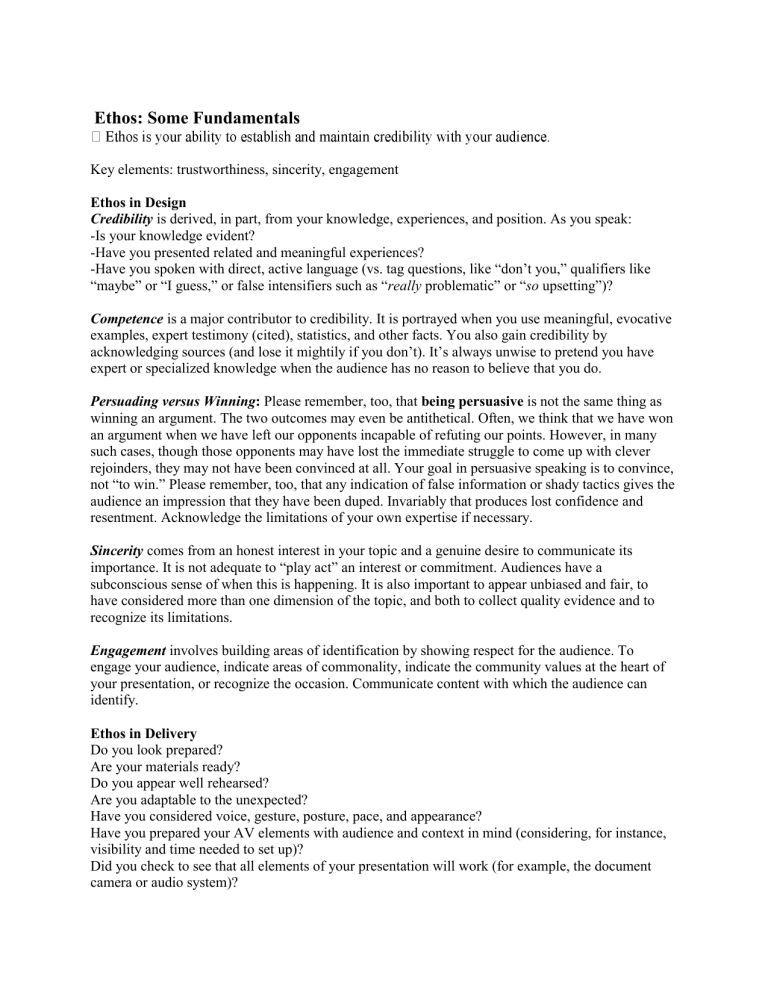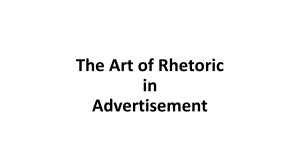
Ethos: Some Fundamentals Key elements: trustworthiness, sincerity, engagement Ethos in Design Credibility is derived, in part, from your knowledge, experiences, and position. As you speak: -Is your knowledge evident? -Have you presented related and meaningful experiences? -Have you spoken with direct, active language (vs. tag questions, like “don’t you,” qualifiers like “maybe” or “I guess,” or false intensifiers such as “really problematic” or “so upsetting”)? Competence is a major contributor to credibility. It is portrayed when you use meaningful, evocative examples, expert testimony (cited), statistics, and other facts. You also gain credibility by acknowledging sources (and lose it mightily if you don’t). It’s always unwise to pretend you have expert or specialized knowledge when the audience has no reason to believe that you do. Persuading versus Winning: Please remember, too, that being persuasive is not the same thing as winning an argument. The two outcomes may even be antithetical. Often, we think that we have won an argument when we have left our opponents incapable of refuting our points. However, in many such cases, though those opponents may have lost the immediate struggle to come up with clever rejoinders, they may not have been convinced at all. Your goal in persuasive speaking is to convince, not “to win.” Please remember, too, that any indication of false information or shady tactics gives the audience an impression that they have been duped. Invariably that produces lost confidence and resentment. Acknowledge the limitations of your own expertise if necessary. Sincerity comes from an honest interest in your topic and a genuine desire to communicate its importance. It is not adequate to “play act” an interest or commitment. Audiences have a subconscious sense of when this is happening. It is also important to appear unbiased and fair, to have considered more than one dimension of the topic, and both to collect quality evidence and to recognize its limitations. Engagement involves building areas of identification by showing respect for the audience. To engage your audience, indicate areas of commonality, indicate the community values at the heart of your presentation, or recognize the occasion. Communicate content with which the audience can identify. Ethos in Delivery Do you look prepared? Are your materials ready? Do you appear well rehearsed? Are you adaptable to the unexpected? Have you considered voice, gesture, posture, pace, and appearance? Have you prepared your AV elements with audience and context in mind (considering, for instance, visibility and time needed to set up)? Did you check to see that all elements of your presentation will work (for example, the document camera or audio system)? Do you appear energetic, assertive, and obviously interested in your audience? Overall, have you taken the time and trouble to be at your best for the audience and to do justice to the topic?




